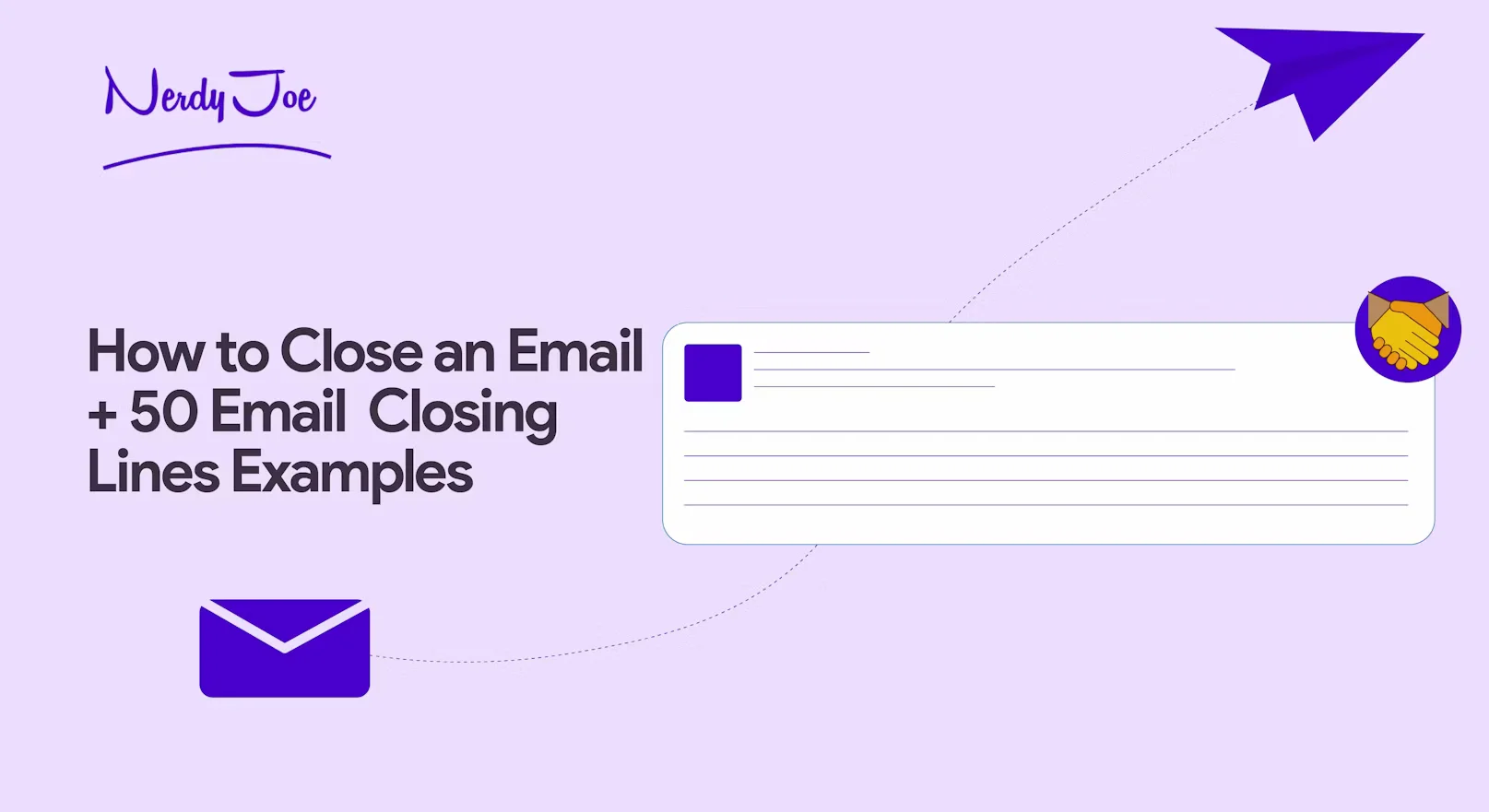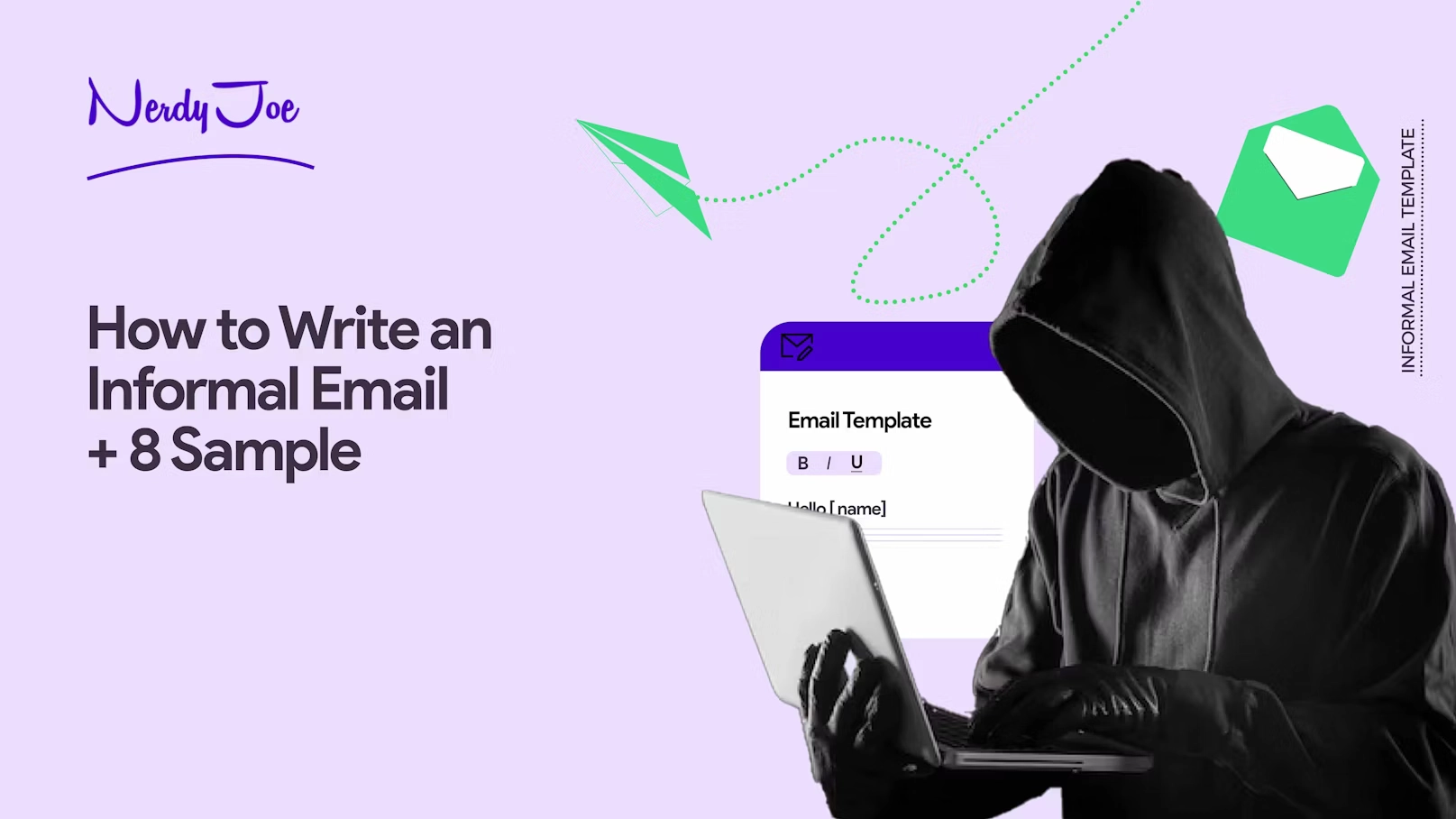Closing an email requires a clear structure and format you must follow. What works for your friends and families won’t work for your professor or someone you’ve not met before.
In such situations, you may find it a bit difficult to string up the appropriate sentence that fits the body of the email.
If this is you, you are in safe hands. Here, you will learn how to close an email effectively, as well as 50 email closing examples. Let’s dive in!
Note: Struggling to get replies or book meetings with prospects that fit in your ICP? We’ll help you get 6 SQLs or book 6 meetings with prospects that are ready to buy for only $999/month. Book a 15-minute consultation now.
How to effectively close an email
Whether it is a phone call, a video conferencing meeting, or a face-to-face conversation, you don’t just leave abruptly when you are done. The same is true when you are writing an email.
You want to leave a good impression on the recipient(s). To do this, here are five elements you must consider to close an email effectively.
- Write an email closing sentence
An email closing line is the last sentence(s) you type before the sign-off. The purpose of the closing line is to wrap up the email by creating a smooth transition between the main subject and the sign-off.
The closing line can express your gratitude for the recipient’s time, be a call-to-action, show that you are open to further communication, or be a statement that indicates you anticipate a response from the recipient.
The email closing remains essential because, without it, your email would appear as if some part of it was cut off.
For instance, here is an example of an email with no closing line.
“Hi, Taylor,
I have a meeting this weekend, so I’m not sure if we can meet up for a conversation. My team has been extremely busy for some weeks now, that’s why I can’t show up.
Best,
Shaun.”
In the example above, you can see that although Shaun was quite eloquent in his email, the lack of a closing line can be interpreted as a lack of professionalism or even missed opportunity.
What if Taylor has something else in mind that could work for both of them? Maybe they could meet at the same place and meet briefly.
Shaun’s email sounds unfinished because he didn’t include the closing line. If he were to add a statement like:
“Let me know what works for you.”
Or,
“What about next weekend? Is it okay with you? Please, let me know your availability so we can work something out.”
The email would have sounded better.
- Write an email sign-off
The next thing you need to include after the email closing line is a sign-off. A sign-off is a word or phrase that shows you’ve ended your email.
Depending on your relationship with the recipient and the context of the conversation, the sign-off can be formal or informal.
Also, don’t forget to include a comma after the sign-off. Some common examples of sign-off include:
- Sincerely,
- All the best,
- Regards,
- Best wishes,
- Thanks in advance,
- Kind regards, and
- Take care.
- Insert your name at the bottom
After the sign-off, ensure you include your full name (first and last name), especially if you are writing to the person for the first time.
For conversations with someone you already know or people that you have exchanged multiple emails with, you can include your first name. However, you should understand that you cannot use your nickname unless it is widely known.
- Create a personalized signature
Once you have included your name, you must identify your job title, company name, and contact information, such as your website, phone number, address, and company logo.
If you are applying for a job, you are best advised to leave your current workplace’s details out.
- Contact information
Even though the recipient has your email address, you can still provide some additional contact information to ensure a comprehensive and professional closing. You can include a direct phone number, social media details (link to your LinkedIn profile), your online portfolio, your latest blog post, your online calendar, and more.
- Optional addition: a postscript (PS)
Although professional emails are expected to be straight to the point, you can still add a summary at the end in the form of a postscript. This enables you to reiterate your point and ensure that your recipient is aware of the message. It could also help to prevent your message from being ignored and get a favorable response.
Things to avoid in email closings
Now that you have learned the elements of a proper email closing, here are some common mistakes you should avoid.
- Overused and cliché closing lines
Your closing lines should be straight to the point. You shouldn’t overuse them or make them sound in a way that doesn’t fit the context of the email. You should also avoid spam-trigger words that could lead to the loss of your email. Use the right words sparingly to get the best result.
- Generic and impersonal email sign-offs
Depending on the context of the email, avoid using generic sign-offs in your emails. These sign-offs often sound too familiar or unprofessional. Instead, you should try to personalize the sign-off or use words that relate to the context of the email. A personalized email has a 29% open rate.
That said, here are some generic and impersonal email sign-offs you should avoid.
- Love,
- Have a blessed day,
- Yours truly,
- May the lord bless you ( or any religious-themed statement)
- Hugs and kisses,
- Peace out! (or other slang).
- Abbreviations
It doesn’t matter whether you are using your mobile phone or keyboard; abbreviating words is unacceptable for email closings. Many professionals deem email correspondence as formal.
Hence, it is essential to write out the words in full. In some other cases, your recipients may not understand some of these terms unless you spell them out. Some commonly abbreviated words you should avoid include “Rgrds,” “Thx,” and more.
- Use of quotes
If you think ending a message with a quote is an appropriate thing to do, you are wrong. Quotes, whether inspirational or not, only misinterpret your initial intention.
They can confuse your recipient, which can lead to miscommunication. In worst cases, your recipient can disagree with the used quotes. So, you are best advised to avoid quotes altogether.
- No closing
It’s also wrong not to include any form of closing in your email. You should at least add a closing phrase and your name. In business emails, you must have a professional signature. It allows your recipient to access your contact or business details with ease.
The only time when you may not use a closing is when there is a conversation chain. You may only use your email signature once.
- Using an oversized logo
Oversized logos can overpower the entirety of your email. If you must use them, you should keep the logo of your company as small as possible. Oversized company logos, lengthy email disclaimers, and unnecessary information about the company can distract your recipients from the main message.
50 examples of effective email closing lines
The most effective email closings often depend on the context. That’s why good closing remarks range from formal to informal. So, choosing the most appropriate ending sentence must correlate with the situation and the tone of your message. Here are 100 examples that can help you.
1. Formal email closings
Formal emails are the emails you send to officials, professors, or representatives of a business. This email adheres to proper email etiquette and is often characterized by correct grammar, spelling, and punctuation.
Although you don’t have to send emails daily, you must get the formal email closing lines right when you write them. For instance, you may need to use formal closing lines for a job application email or an email to your professor.
Here is a list of formal email closing examples you can use.
- “I look forward to your feedback on the proposal discussed.”
- “If you have any further questions or require additional information, please do not hesitate to contact me.”
- “Should you need any further clarification regarding the matter, I am available at your convenience.”
- “Thank you for considering my application. I am keen to further discuss my suitability for the role.”
- “I appreciate your time and look forward to the potential opportunity of working with your esteemed organization.”
- “Your guidance on the matter would be highly appreciated.”
- “Thank you for your attention to this matter, and I eagerly await your response.”
- “I am confident that our proposed solution will address the issues outlined in your brief.”
- “We anticipate your approval to proceed with the project as planned.”
- “Thank you for your continued support. I am looking forward to our further cooperation.”
In formal or professional communication, it’s important to use sign-offs that reflect a high level of respect and professionalism. Here are some examples:
- “Sincerely.”
- “Respectfully.”
- “Yours faithfully.”
- “Yours sincerely.”
- “Yours truly.”
- “Best regards.”
- “Kind regards.”
- “Cordially.”
- “With appreciation.”
- “Respectfully yours.”
These formal sign-offs help to establish a professional tone and show the recipient that you respect their time and attention. They are typically used in official communications, job applications, or any kind of formal correspondence.
2. Professional email closing examples
Professional email closings serve as a courteous ending to your correspondence, often indicating a continuation of the discussion, receiving further information, showing gratitude, or expressing enthusiasm for future collaboration.
They exist somewhere in the middle ground between formal and friendly emails. To make things easier for you, here are some examples that can help:
- “I look forward to our scheduled meeting next week.”
- “Thank you for your invaluable input; I’ll incorporate your suggestions into the project.”
- “Please feel free to reach out if you need further assistance on this matter.”
- “I’m excited about the potential that this opportunity presents for our team.”
- “I’ll make sure to update you as we make progress on the project.”
- “Your prompt attention to this matter would be greatly appreciated.”
- “Thank you for your time. I’m eager to hear your thoughts on my proposal.”
- “I’m looking forward to further discussing this during our call.”
- “I’m confident that our team can deliver the results as per the agreed timelines.”
- “I appreciate your continued support as we navigate these changes together.”
Your professional email closings and sign-offs will also fit perfectly here as well.
3. Business email endings
Writing a closing line for a business email may be a bit difficult. Unlike other types, these email closing lines are a bit unique as they depend on the relationship you have with the recipient. More importantly, it requires a careful balance of professionalism and cordiality.
Here are some examples you can consider:
- “I look forward to the possibility of working together.”
- “Let’s touch base next week to discuss the proposal.”
- “We appreciate your business and are ready to assist with any further needs.”
- “Thank you for your interest in our services. I’ll be in touch with more details soon.”
- “We’re excited about the potential partnership between our companies.”
- “I trust the enclosed proposal meets your business needs.”
- “Please find attached the contract for your review. I look forward to your feedback.”
- “Thank you for your continued trust in our services. We value your partnership.”
- “Looking forward to discussing this further at our scheduled meeting.”
- Looking forward to hearing from you soon.
- “Your satisfaction is our priority. Please don’t hesitate to reach out if you have any queries.”
Here are some examples of email sign-offs you can use in combination for your business communication. Keep in mind that it should maintain a professional tone. Here are some examples:
- “Best regards.”
- “Sincerely.”
- “Yours faithfully.”
- “Kind regards.”
- “Yours sincerely.”
- “Respectfully.”
- “Thank you in advance”
- “Best wishes.”
- “Cordially.”
- “With appreciation.”
- “Yours truly.”
- “Warm regards.”
- “Looking forward to your reply.”
- “Regards.”
- “Warmest regards.”
4. Polite email closing lines
Polite email closing lines showcase respect and consideration in the email message without necessarily being overly formal or stiff. They often express gratitude, show understanding, or offer assistance. Here are ten examples of polite email closing lines:
- “Thank you for your time and attention.”
- “I appreciate your understanding and patience regarding this matter.”
- “Looking for your prompt response.”
- “Please don’t hesitate to reach out if you need any further assistance.”
- “Your insights and feedback would be greatly appreciated.”
- “I apologize for the inconvenience and am working on resolving the issue promptly.”
- “I hope this explanation clarifies the situation, and I’m open to further discussion.”
- “Thank you for your guidance and support.”
- “I look forward to the meeting.”
- “Your trust and satisfaction are our highest priority.”
Here are some examples of polite, professional email sign-offs you can use here:
- “Best regards.”
- “Sincerely.”
- “Have a wonderful day.”
- “Wishing you all the best.”
- “With appreciation.”
- “Respectfully yours.”
- “Yours faithfully.”
5. Informal email endings
Informal email closing remarks greatly differ from others. Informal email closing lines are more relaxed and personalized, reflecting a close or casual relationship with the recipient. They are casual email closing phrases that are written to be friendly, enthusiastic, or affectionate.
Here are some examples you can consider:
- “Catch up soon!”
- “I look forward to hearing from you soon”
- “Looking forward to our lunch.”
- “Hope you’re enjoying the sunshine.”
- “Can’t wait to hear all about your trip.”
- “Good luck with the big move!”
- “Take care, and say hi to everyone for me.”
- “Enjoy your weekend, and see you at the game!”
- “Keep me posted on how things are going.”
- “Missing our coffee chats. Let’s plan one soon.”
- “Feel free to contact me if you need any more information.
- “Stay safe and talk soon.”
- “Drop me a line when you’re ready, and I’ll give it my immediate attention”
Here are some examples of email sign-off you can use here to ensure a successful working relationship between you and your recipients:
- “Cheers.”
- “Best.”
- “Thanks.”
- “Catch you later.”
- “Stay safe.”
- “Talk soon.”
- “Take care.”
- “Keep in touch.”
- “Enjoy your day.”
- “Have a great day/weekend.”
- “Later.”
- “See you soon.”
- “Yours.”
- “Ciao.”
Remember, it’s always important to gauge the relationship you have with the person you’re emailing. These sign-offs can work well when corresponding with friends, peers, or colleagues with whom you have an established, informal relationship. You shouldn’t use these for formal or business emails.
Key takeaways
- Irrespective of who you are emailing, it is essential that you close your email in a clear, strong, and concise way.
- A great email ending must always include a strong closing line, an appropriate sign-off, and an email signature.
- Your relationship with your recipient often determines how formal the closing and sign-off will be.
- Need help with closing your email effectively and lead generation? We are email marketers that can help you get highly-stellar results from email marketing and cold emails. Give us a response today.
Note: Struggling to get replies or book meetings with prospects that fit in your ICP? We’ll help you get 6 SQLs or book 6 meetings with prospects that are ready to buy for only $999/month. Book a 15-minute consultation now.


![How to Generate B2B Leads With Cold Outreach [Case Study]](https://nerdyjoe.com/wp-content/uploads/2024/06/1669218674-artboard-1-copie-4-3x-1-scaled.webp)
